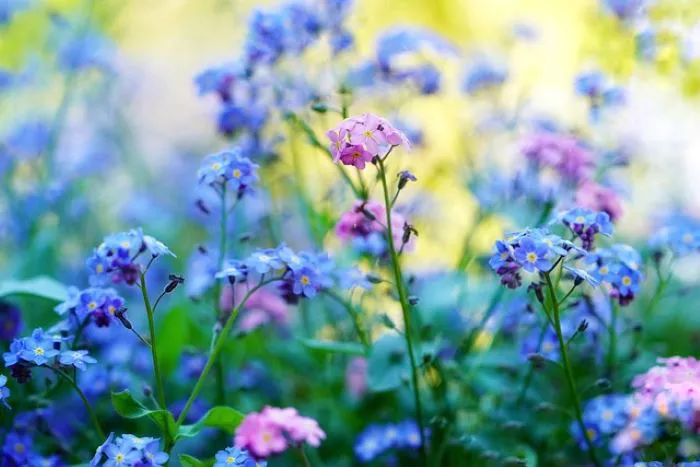Rabbits are charming creatures, but they can be a significant challenge for gardeners. Their natural instinct is to nibble on a variety of plants, including many flowers. If you want to create a beautiful garden without attracting these furry pests, it is essential to choose flowers that are less appealing to rabbits. This article will explore various flowers that are known to be rabbit-resistant, helping you create a vibrant garden that can thrive despite their presence.
Understanding Rabbit Behavior
To effectively deter rabbits, it is helpful to understand their feeding habits. Rabbits are herbivores and prefer tender, young shoots and leaves. They tend to avoid plants that have strong scents or bitter tastes. Additionally, they are less likely to eat flowers that have fuzzy or spiny textures. By selecting flowers that align with these characteristics, you can minimize the chances of rabbit damage in your garden.
Rabbit-Resistant Flowers
Several flowers are known for their ability to withstand rabbit browsing. Here are some popular options that can add beauty to your garden while keeping rabbits at bay.
Marigolds
Marigolds are bright, cheerful flowers that rabbits typically avoid. Their strong scent and bitter taste make them unappealing to these animals. Marigolds are easy to grow and can thrive in various soil conditions. They also attract beneficial insects, making them a great addition to any garden.
Lavender
Lavender is a fragrant herb that rabbits tend to avoid due to its strong aroma. This perennial plant produces beautiful purple flowers and is drought-tolerant once established. Lavender can be used in cooking, crafts, and aromatherapy, making it a versatile choice for your garden.
Snapdragons
Snapdragons are another excellent option for a rabbit-resistant garden. These flowers come in various colors and have a unique shape that adds interest to any landscape. Snapdragons are hardy and can tolerate a range of growing conditions. Their slightly bitter taste makes them less appealing to rabbits.
Daffodils
Daffodils are spring-blooming bulbs that rabbits generally avoid. The bulbs contain toxic compounds that deter these animals from eating them. Daffodils produce bright yellow flowers that can brighten up your garden in early spring. Planting them in clusters can create a stunning display.
Foxglove
Foxglove is a tall, elegant flower that rabbits tend to leave alone. Its beautiful tubular blooms come in various colors, including purple, pink, and white. While foxglove is toxic if ingested, its striking appearance makes it a favorite in many gardens. However, caution is advised if you have pets or small children.
Salvia
Salvia is a diverse group of flowering plants that are generally resistant to rabbits. These perennials produce spikes of colorful flowers and are known for attracting pollinators. Salvia is drought-tolerant and can thrive in poor soil conditions, making it a practical choice for gardeners.
Coneflower
Coneflowers, or echinacea, are resilient perennials that rabbits tend to avoid. They produce large, daisy-like flowers in shades of purple, pink, and white. Coneflowers are not only beautiful but also attract butterflies and bees, adding life to your garden.
Yarrow
Yarrow is a hardy perennial with feathery foliage and clusters of small flowers. It is often found in wildflower gardens and is known for its drought resistance. Rabbits typically avoid yarrow due to its strong scent and bitter taste. This low-maintenance plant can thrive in various conditions.
Catmint
Catmint is a member of the mint family and is known for its aromatic leaves and beautiful blue flowers. Rabbits usually avoid this plant due to its strong scent. Catmint is also drought-tolerant and can attract beneficial pollinators, making it an excellent addition to any garden.
Other Considerations
While the flowers listed above are generally resistant to rabbits, it is essential to remember that no plant is entirely safe from these animals. In times of food scarcity, rabbits may nibble on plants they typically avoid. To further protect your garden, consider these additional strategies.
Planting in Groups
Planting rabbit-resistant flowers in groups can create a more robust barrier against browsing. Dense plantings make it more challenging for rabbits to access individual plants, reducing the likelihood of damage.
Using Barriers
Physical barriers can help protect your flowers from rabbits. Fencing is an effective solution. A fence should be at least three feet tall and buried a few inches underground to prevent rabbits from digging underneath. Alternatively, using row covers or garden netting can protect young plants.
Companion Planting
Companion planting involves growing certain plants together to deter pests. Consider planting rabbit-resistant flowers alongside other plants that rabbits may find appealing. The strong scents of the resistant flowers can help mask the odors of the more vulnerable plants.
Maintaining a Healthy Garden
A healthy garden is less attractive to rabbits. Regular maintenance, including weeding, watering, and fertilizing, can help plants thrive and reduce stress. Healthy plants are more resilient and less likely to be damaged by pests.
Conclusion
Creating a garden that rabbits won’t eat is entirely possible with careful planning and plant selection. By choosing rabbit-resistant flowers such as marigolds, lavender, snapdragons, and daffodils, you can enjoy a vibrant and beautiful landscape. Understanding rabbit behavior and implementing protective measures will further enhance your success. With a little effort, you can cultivate a stunning garden that remains untouched by these furry visitors. Enjoy the process of gardening and the beauty that comes with it, knowing that your flowers are safe from hungry rabbits.


